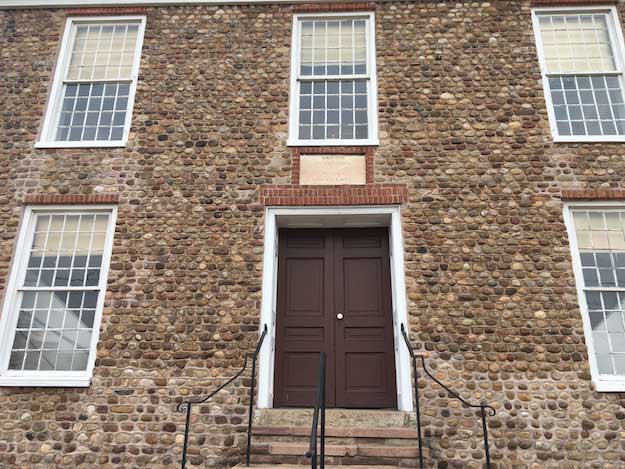Cobblestone Museum comes in second in contest among 7 heritage sites in WNY

Photo by Tom Rivers: The Cobblestone Church on Route 104, just east of Route 98, is part of the Cobblestone Museum, a National Historic Landmark.
CHILDS – An online voting competition has ended with the Cobblestone Museum coming in second out of seven heritage sites in Western New York.
The Regina A. Quick Center for the Arts at St. Bonaventure University had the most votes and will have a panel of experts visit the site and offer suggestions for reimagining how the site’s collections could be presented to the public.
The vote totals for the seven sites include: 3,644 for Regina A. Quick Center for the Arts at St. Bonaventure University; 1,259 for the Cobblestone Museum; 1,061 for Memorial Art Gallery in Rochester; 464 for Theodore Roosevelt Inaugural Site in Buffalo; 393 for Herschell Carrousel Factory Museum in North Tonawanda; 319 for Geneva Historical Society; and 279 for Roger Tory Peterson Institute of Natural History in Jamestown.
“Thanks again to everyone who voted during the Creativity Incubator contest, the Cobblestone Museum posted today on its Facebook page. “The Cobblestone Museum came in second place behind St. Bonaventure University. Thank you for your show of support. The results are pretty amazing!”
The New York State Council on the Arts/Greater Hudson Heritage Network sponsored the “Heritage Network Creativity Incubator” program. The Incubator series was launched to assist museums and historical sites that are pressured from changing demographics, shrinking attendance, tightened budgets, increased competition, and exponential growth of technology and social media.
The Creativity Incubator includes workshop series led by the Museum Mavericks, who are some of the most creative thinkers in the field today. The winning museum or heritage site will have its collections or permanent installations re-imagined by the Museum Mavericks and session participants. The group will also explore the chosen site’s collections, discovering the amazing stories they hold and creating new ones.
“The end goal of the program is to open our eyes to the possibilities and encourage museums to think more imaginatively about the interpretation of their collections and the visitor experience,” according to the Incubator.






































































